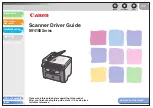
9
Window Material and Color
Window material must be clear. Use only cell-cast plastics or optical glass. PMMA, ADC and chemically tempered glass are
recommended. Window material selected for the engine should meet or exceed the specifications specified in
Table 2-2
.
•
PMMA (Cell-cast acrylic):
When fabricated by cell-casting, has very good optical quality and low initial cost, but surface
must be protected from the environment due to its susceptibility to attack by chemcials, mechanical stresses, and UV
light. Reasonably good impact resistance. This material can be laser-cut into odd shapes and ultrasonically welded.
•
ADC (CR-39):
A thermal-setting plastic produced by the cell-casting process. Excellent chemical and environmental
resistance. Quite good surface hardness, and therefore does not have to be hard-coated. Reasonably good impact
resistance. This material cannot be ultrasonically welded.
•
Chemically tempered glass:
Glass is a hard material which provides excellent scratch and abrasion resistance. But
unannealed glass is brittle. Increased flexibility strength with minimal optical distortion requires chemical tempering.
Glass is hard to be cut into odd shapes and cannot be ultrasonically welded.
Table 2-2
Specification
Description
Spectral Transmittance
≥
90%
Thickness
0.8-2.0mm
Wavefront Distortion
PV maximum: 0.2λ
RMS maximum: 0.04λ
Clear Aperture
1.0mm to edges
Surface Quality
60-20 scratch/dig
Pay extra attention to the wavefront distortion when using plastic materials. Colored windows are not recommended if the
engine is used to scan barcodes on moving objects.
Coatings and Scratch Resistance
Scratch on the window can greatly reduce the performance of the EM20-M37. It is suggested to use abrasion resistant
window material or coating.
The following introduces two commonly-used types of coatings:
•
Anti-reflection coatings:
Anti-reflection (AR) coatings can be applied to window surfaces to reduce reflected light from
the window back into the engine. But they are expensive and have poor abrasion/scratch resistance.
•
Polysiloxane coatings:
Polysiloxane coatings can be applied to plastic surfaces
to increase the surfaces’ abrasion and
scratch resistance.















































